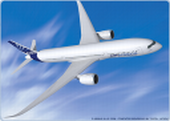
Conference Location

History
|
|

|

|
The city was founded in 1517, when it was named Franciscopolis after Francis I of France, and subsequently named Le Havre-de-Grâce ("Harbor of Grace"; hence Havre de Grace, Maryland, the latter term being derived from the chapel Notre-Dame-de-Grâce, which existed on the site before the city's founding. Le Havre simply means the harbour or the port. Its construction was ordered to replace the ancient harbours of Honfleur and Harfleur whose utility had decreased due to silting. |
|
The history of the city is inextricably linked to its harbour. In the 18th century, as trade from the West Indies was added to that of France and Europe, Le Havre began to grow. On 19 November 1793, the city changed its name to Hâvre de Marat and later Hâvre-Marat in honor of the recently deceased Jean-Paul Marat, who was seen as a martyr of the French Revolution. By early 1795, however, Marat's memory had become somewhat tarnished, and on January 13, 1795, Hâvre-Marat changed its name once more to simply Le Havre, its modern name. |
|
|
During the 19th century, it became an industrial centre, an image vividly brought to life by the paintings of Claude Monet. The German-seized city was devastated during the Battle of Normandy in World War II: 5,000 people were killed and 12,000 homes were totally destroyed, mainly by British air attacks. Despite this, Le Havre became the location of one of the biggest Replacement Depots, or "Repple Depples" in the European Theatre of operations in WWII. Thousands of American replacement troops poured through the city before being deployed to combat operations. After the war, the center was rebuilt in modernist style by Auguste Perret. |
|
|
UNESCO declared the city center of Le Havre a World Heritage Site on July 15, 2005, in honoring the "innovative utilization of concrete's potential." The 133-hectare space that represents, according to UNESCO, "an exceptional example of architecture and town planning of the post-war era," is one of the rare contemporary World Heritage Sites in Europe. |

|

|
The city has also been dubbed the Porte Océane, or Door to the Ocean. Architecturally, this image has been revived through the "door" that forms the frame at either end of Fochs Avenue, which comes out of the sea. In population, Le Havre ranks second of the French ports, first of the cities in Normandy, and ranks second in the metro areas of Haute-Normandie. Le Havre was once synonymous with urban coldness and grayness. The city's inhabitants have done much to change this, and it has been marked by improvement since then. The city is spoken of now as the Brasilia of France |

|

|

|
Parts of this text were copied from 
Conference Venue

|
The ESM'2008 conference is held at the |
How to get to Le Havre 
By Plane |
Le Havre has its own airport called Octeville Airport. From there you can take a taxi (Radio-taxis : |
By Train |
Le Havre is two hours away from Paris by train. Departure from "Gare St Lazare". For more train info see the French Railway Site. SNCF (Rail), Cours de la Republique. |
By Ferry |
Le Havre is linked by ferry service to Portsmouth in the United Kingdom which runs from the Terminal de la Citadelle. The service is operated by LD Lines. |
By Taxi |
See info above. While here you will find the bus info. |
By Car |
You can find highway information from Paris to Le Havre here. From the North East to Le Havre here. And last but not least from the centre of France to Le Havre here. |
On Foot
|
The university can be found on the map below just under the logo of Le Havre and north of the Gare SNCF. |
Le Havre Maps

|
|
|

 Le Havre is a city in the northwest region of France situated on the right bank of the mouth of the Seine River, in the southwest of the Pays de Caux region. It is a commune in the Seine-Maritime department and the Haute-Normandie region. The inhabitants of the city are called Havrais or Havraises. It is the most populous commune in the Haute-Normandie region and the largest sub-prefecture in France. The city is surrounded by the seashore of the English Channel to the west, the mouth of the Seine to the south, and the coast to the north. The Seine has, for a long time, marked a natural border between Haute-Normandie and Basse-Normandie. Thus, the city of Honfleur is, in the expression of the Havrais, "on the other coast."
Le Havre is a city in the northwest region of France situated on the right bank of the mouth of the Seine River, in the southwest of the Pays de Caux region. It is a commune in the Seine-Maritime department and the Haute-Normandie region. The inhabitants of the city are called Havrais or Havraises. It is the most populous commune in the Haute-Normandie region and the largest sub-prefecture in France. The city is surrounded by the seashore of the English Channel to the west, the mouth of the Seine to the south, and the coast to the north. The Seine has, for a long time, marked a natural border between Haute-Normandie and Basse-Normandie. Thus, the city of Honfleur is, in the expression of the Havrais, "on the other coast."


 Tel:
Tel:  Fax: +33 232 744 314
Fax: +33 232 744 314















